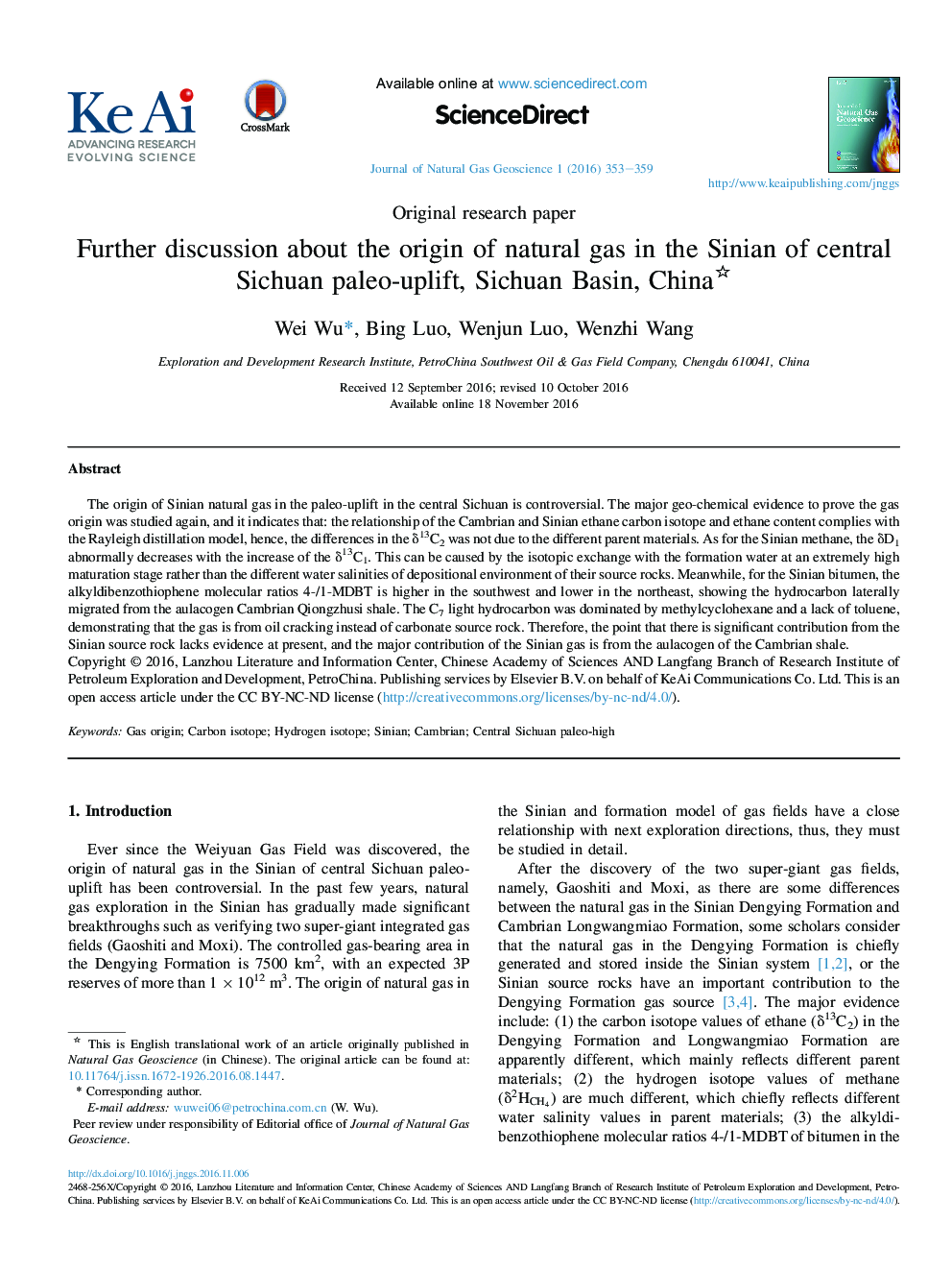| Article ID | Journal | Published Year | Pages | File Type |
|---|---|---|---|---|
| 8124250 | Journal of Natural Gas Geoscience | 2016 | 7 Pages |
Abstract
The origin of Sinian natural gas in the paleo-uplift in the central Sichuan is controversial. The major geo-chemical evidence to prove the gas origin was studied again, and it indicates that: the relationship of the Cambrian and Sinian ethane carbon isotope and ethane content complies with the Rayleigh distillation model, hence, the differences in the δ13C2 was not due to the different parent materials. As for the Sinian methane, the δD1 abnormally decreases with the increase of the δ13C1. This can be caused by the isotopic exchange with the formation water at an extremely high maturation stage rather than the different water salinities of depositional environment of their source rocks. Meanwhile, for the Sinian bitumen, the alkyldibenzothiophene molecular ratios 4-/1-MDBT is higher in the southwest and lower in the northeast, showing the hydrocarbon laterally migrated from the aulacogen Cambrian Qiongzhusi shale. The C7 light hydrocarbon was dominated by methylcyclohexane and a lack of toluene, demonstrating that the gas is from oil cracking instead of carbonate source rock. Therefore, the point that there is significant contribution from the Sinian source rock lacks evidence at present, and the major contribution of the Sinian gas is from the aulacogen of the Cambrian shale.
Related Topics
Physical Sciences and Engineering
Earth and Planetary Sciences
Geochemistry and Petrology
Authors
Wei Wu, Bing Luo, Wenjun Luo, Wenzhi Wang,
